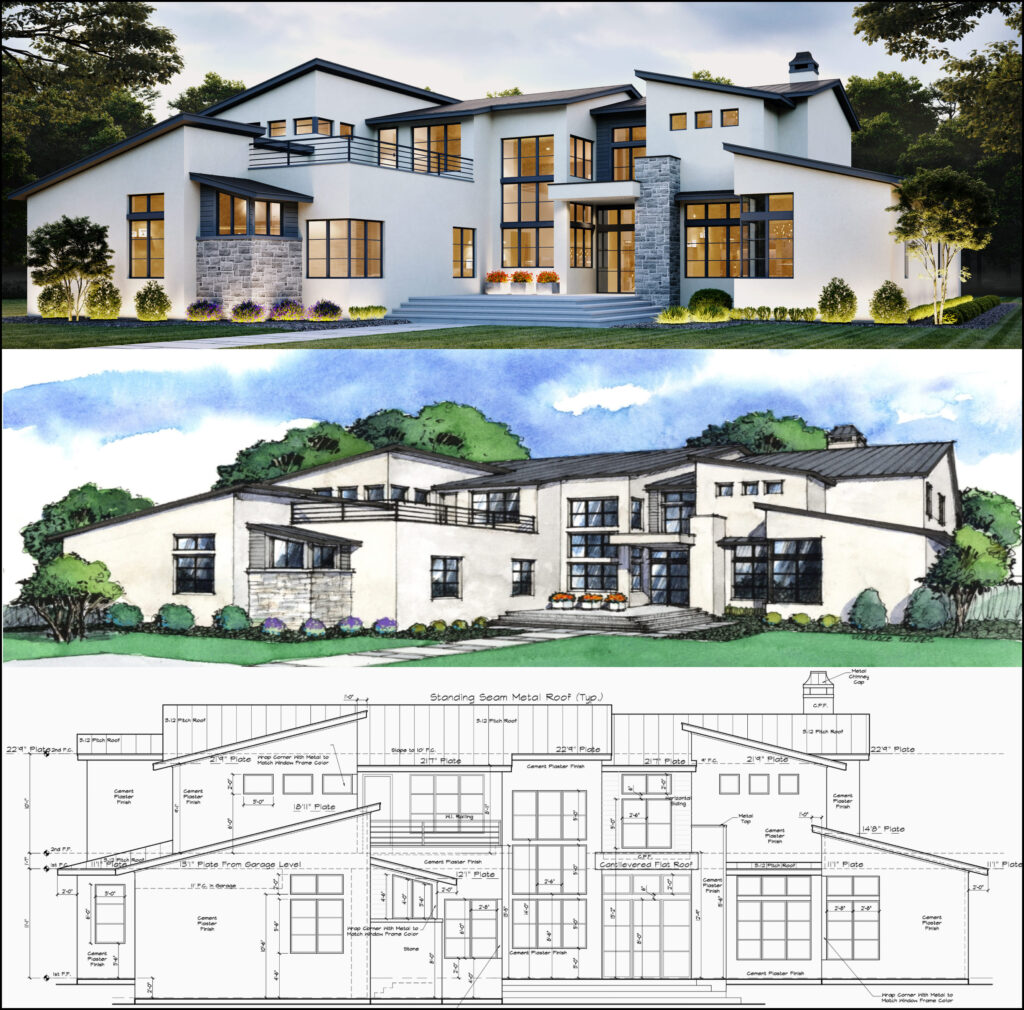Elevate Your Building Design with the Knowledge of CDA Architects
Elevate Your Building Design with the Knowledge of CDA Architects
Blog Article
A Detailed Review of Building Designs and Their Impact on Modern City Planning and Growth
Building designs have actually long served as a mirror to the societal worths and technological developments of their time, playing an important role in forming modern-day city planning and development. From the majesty of Neoclassicism to the practical approach of Brutalism, each design has introduced one-of-a-kind ideas that influence metropolitan appearances and performance.
Historic Overview of Architectural Styles

As cultures transitioned via the Center Ages, Gothic architecture emerged, defined by its verticality and complex outlining, matching the spiritual ambitions of the period. The Renaissance noted a resurgence of classical perfects, merging art and style in cutting-edge manner ins which influenced succeeding designs across Europe.

Today, building designs continue to progress, driven by globalization and sustainability concerns, showing a vibrant interplay between heritage and advancement. This historical summary emphasizes the significance of design as a mirror of social evolution and as a driver for urban advancement.
Trick Architectural Styles Explained
The diversity of architectural designs reflects the myriad influences that shape our developed atmosphere, each embodying distinctive features and social significances. Secret architectural designs consist of Classic, Gothic, Baroque, Innovation, and Postmodernism, each representing distinct historic contexts and aesthetic philosophies.
Timeless style, rooted in ancient Greece and Rome, emphasizes symmetry, proportion, and making use of columns (cda architects). On the other hand, Gothic architecture, thriving in the Middle Ages, is defined by pointed arches, ribbed vaults, and flying buttresses, creating an ethereal quality in cathedrals. Baroque architecture, emerging in the 17th century, is noted by majesty, elaborate ornamentation, and a dynamic interplay of light and shadow
Modernism, which obtained energy in the very early 20th century, focuses on feature over kind, using new materials like steel and glass to create minimalist frameworks. Postmodernism, reacting versus the austerity of Innovation, embraces eclecticism and historic referral, usually including spirited aspects and paradox.
:max_bytes(150000):strip_icc()/Buildingdesigns-GettyImages-912482942-db55b3af711044a3a42ad1040c6711a9.jpg)
Effect On Urban Preparation
In shaping the growth of cities, building designs considerably influence metropolitan preparation decisions. The choice of architectural design commonly dictates the appearances, functionality, and overall character of urban atmospheres.
Furthermore, architectural styles can affect zoning guidelines and land utilize plans. Urban coordinators need to take into consideration the dominating architectural fads when designing districts, ensuring that new developments integrate with existing frameworks. This factor to consider promotes cohesive metropolitan landscapes and boosts neighborhood identity.
The application of certain building styles can likewise affect socioeconomic factors within a Continued city. High-end modern styles may bring in upscale locals and businesses, leading to gentrification, while more economical housing remedies may prioritize sensible and sustainable designs to fit diverse populaces. cda architects. Inevitably, the interplay between building designs and city preparation creates dynamic cities that mirror both historical context and modern requirements, shaping the lived experiences of their citizens
Sustainability and Modern Design
Building designs play a crucial function in attending to modern difficulties, particularly in the realm of sustainability. As metropolitan locations expand and environmental issues escalate, contemporary style significantly welcomes sustainable layout concepts that prioritize power effectiveness, source conservation, and very little environmental impact.
Contemporary building activities, such as biophilic design and environment-friendly architecture, advocate for frameworks that harmonize with their environments, utilizing all-natural products and advertising biodiversity. These styles usually incorporate sustainable power sources, such as photovoltaic panels and wind generators, to reduce reliance on fossil gas and reduced carbon impacts.
Moreover, the combination of innovative technologies, such as wise building systems, improves power monitoring, maximizing source usage while ensuring occupant comfort. Innovative water management methods, including rainwater harvesting and greywater recycling, additional contribute to lasting metropolitan atmospheres.
Significantly, sustainability expands beyond ecological Discover More concerns; it includes social and financial measurements. By promoting neighborhood wellness and promoting inclusivity, modern building designs line up with lasting advancement goals. The evolution of building methods continues to form resistant cities that not just satisfy the needs of the existing however likewise safeguard the future for generations to come.
Community Engagement in Design
Area interaction in design acts as an essential bridge between engineers and the populaces they serve, ensuring that the constructed atmosphere reflects the demands and goals of its users. This collective process invites neighborhood members to add their insights and choices, promoting a feeling of ownership and responsibility towards the areas they live in.
Efficient community interaction employs different methods, such as workshops, studies, and public discussion forums, to gather varied perspectives. These techniques facilitate a two-way discussion, allowing designers to recognize local contexts while equipping residents to voice their concerns and wishes. This inclusivity not just enhances the design quality yet also promotes social equity by resolving the distinct difficulties encountered by marginalized groups.
Additionally, community interaction can bring about innovative options that could not emerge in a conventional style procedure. By incorporating regional understanding and cultural values, designers can develop rooms that resonate more deeply with individuals, boosting use and sustainability. Ultimately, prioritizing neighborhood interaction in layout processes leads to atmospheres that support social communications, assistance health, and strengthen community ties, consequently playing a pivotal role fit modern metropolitan landscapes.
Final Thought
Architectural styles have actually exceptionally influenced modern city preparation and advancement, reflecting evolving social and technological contexts. As cities proceed to expand and adapt, the ongoing discussion between building heritage and contemporary design concepts will certainly stay vital in creating comprehensive, dynamic spaces that boost high quality of life and advertise social equity.
Report this page